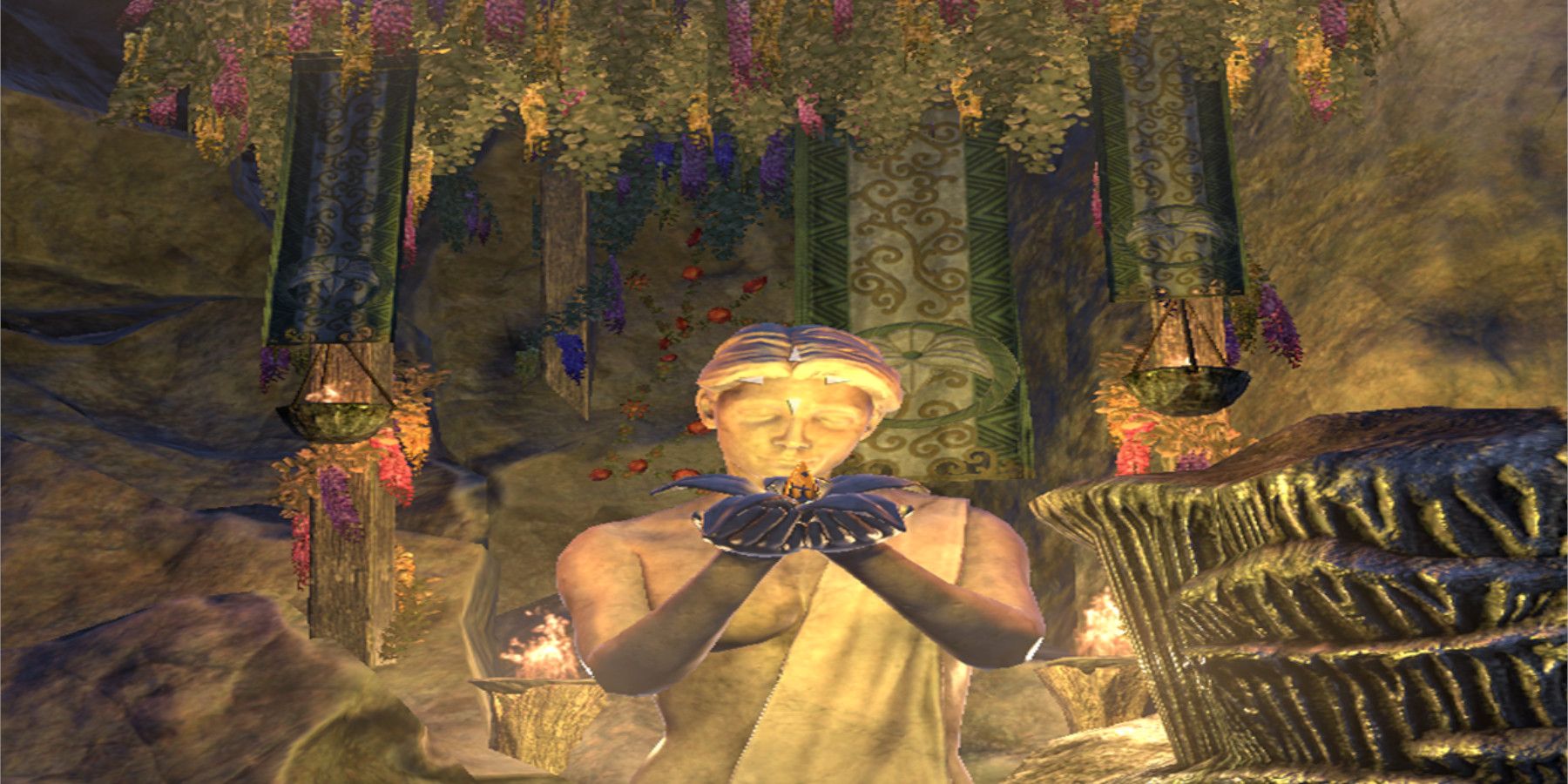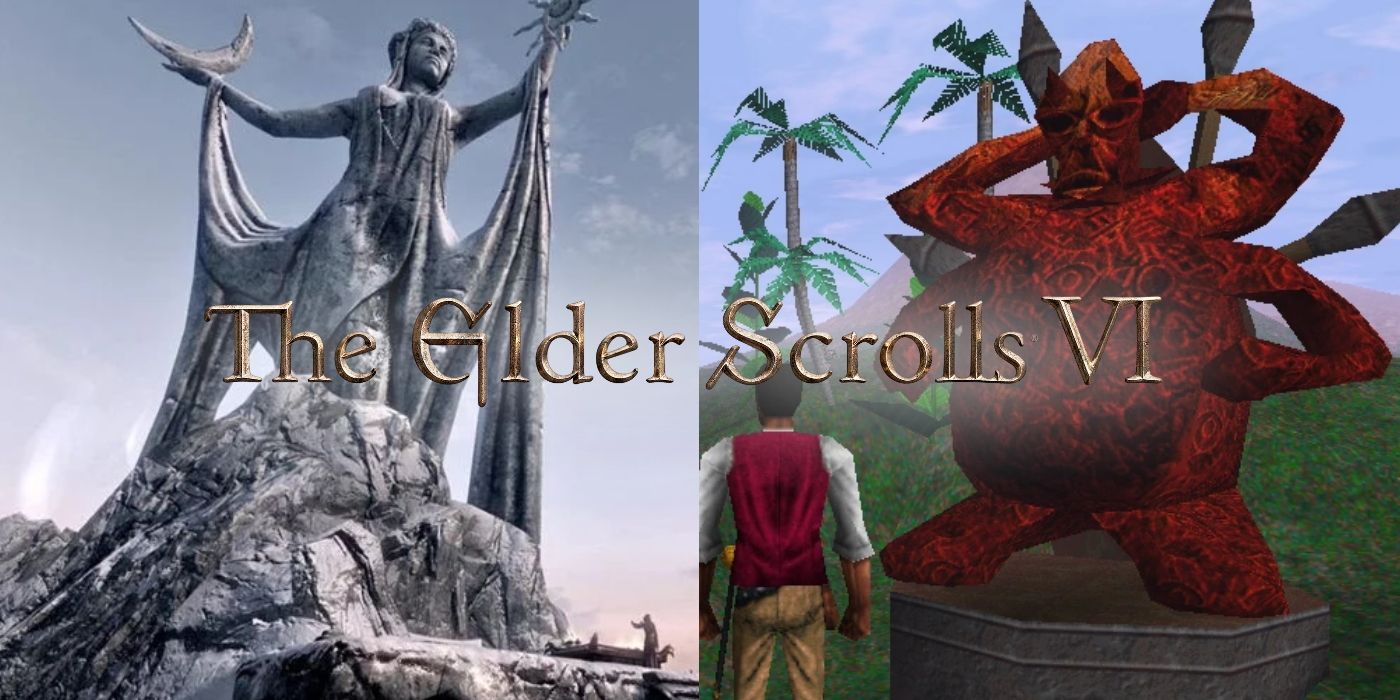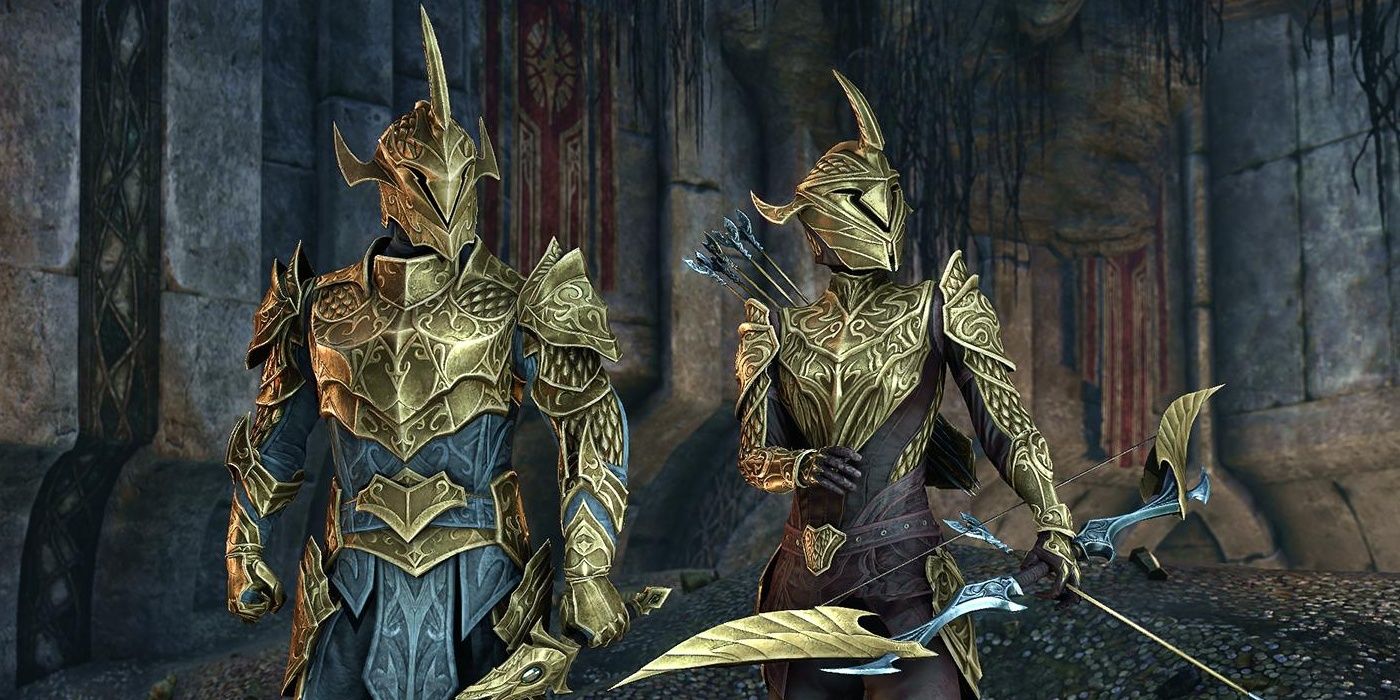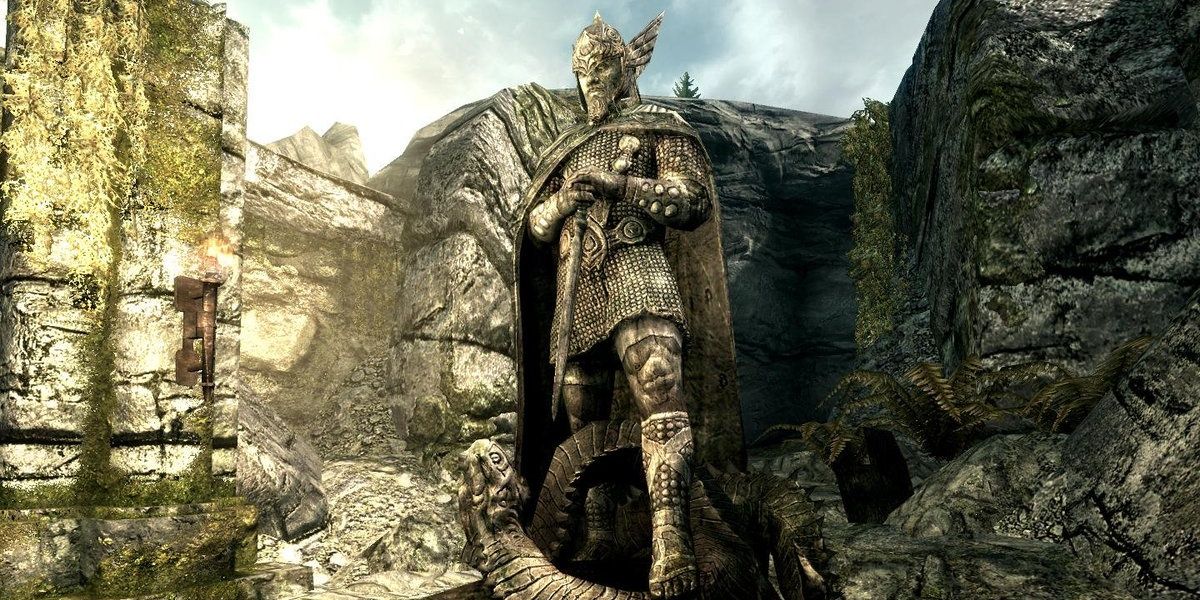The lore of The Elder Scrolls series is incredibly dense and thorough. This helps make the world of Tamriel feel alive, but can also make it very difficult for fans to piece it all together to get a complete picture of The Elder Scrolls' setting. With there being ten distinct playable races, each with its own customs, cultures, and religions there can be a lot going on when trying to decipher what sort of gods are worshipped across the land, as well as what ones actually exist.
Future Elder Scrolls titles will undoubtedly continue to expand and further explain the religions and beliefs of the people of Tamriel, but there is already a lot of differences between the religious beliefs of the Redguard and Skyrim's Nords. Things get even more complicated when examining the beliefs of the Khajiit or Argonian, but there is one thing that stays rather consistent across all of the religions in The Elder Scrolls. These are the et'Ada, also known as the Original Spirits. While the et'Ada don't make an appearance in any of the games in the series, they are consistently referenced throughout and are crucial to understanding the world and lore of The Elder Scrolls.
The Et'Ada in The Elder Scrolls
The origins of the et'Ada are subject to a number of different theories and beliefs raised through the various creation myths that are followed by the people of Thedas. While they are all a bit abstract and weird, they do contribute a lot to what makes The Elder Scrolls such a great setting. However, there are similarities shared between them that contribute to a generally accepted story.
It all starts with the being known as Anu, an all-encompassing static force that is void of personality, compassion, or will. Anu's power eventually created its opposite, Padomay, also known as the void. Some myths, however, start with both of them coming into existence simultaneously as twins. The battling interplay of their co-existence led to the creation of Aurbis, the universe, as well as the et'Ada.
One of these et'Ada was named Lorkhan. The exact origins of Lorkhan are debated between different belief systems, but they all agree that Lorkhan somehow convinced his fellow et'Ada to create the realm of Mundus, the mortal realm that players know well from The Elder Scrolls games. This caused many of the et'Ada who participated to weaken and eventually recede to the realm known as Aetherius.
Those who did not agree with the creation of Mundus instead created Oblivion and each of them took their own realm within. Lorkhan was also punished for his deceit of the other et'Ada by having his divine spark hurled at the planet in Mundus known as Nirn, which led to the creation of life on the planet. The remains of Lorkhan are believed to be the moons Masser and Secunda, which play a massive role in the religious beliefs of the Khajiit.
The Aedra vs Daedra
The Aedra are the et'Ada who helped create Mundus and reside in the realm Aetherius. Their name comes from the Aldmeri language and roughly translates to "our ancestors" as most races on Nirn revere the Aedra as their gods. Each Aedra has its own sphere of influence over the realm of Mundus, although their power was greatly weakened by the creation of the realm.
The Aedra are thus worshipped across Tamriel, with many of them making up some of the most interesting characters in The Elder Scrolls. However, humans and the races of mer worship them very differently, with the mer races worshipping Aedra who are no longer connected to Nirn and have seemingly disappeared.
The Daedra are the inverse of the Aedra, with the name roughly translating to "not our ancestors." The Daedra were first created by the et'Ada who did not assist in the creating of Mundus and instead created their own realms in Oblivion. These et'Ada became the original Daedric Princes, each of which ruled their own sphere while also creating the monstrous denizens of Oblivion that are widely referred to as the Daedra. This led to the various types of Daedra that players are familiar with from throughout The Elder Scrolls, as the Daedric Princes seek to destroy Mundus as they see it as a realm stolen from them by the other et'Ada.
Other Gods in The Elder Scrolls
While the et'Ada are primarily the original spirits that were created before the beginning of time, there are some mortals that have risen to godhood through what is referred to as CHIM. CHIM is also known as the Secret Syllable of Royalty and allows a mortal to remove all influences of Oblivion on them so that they can return to the state of influence by both Anu and Padomay, resulting in godhood.
The first attempt at CHIM was Lorkhan's creation of Mundus, which was ultimately a failure. However, two mortals have managed to reach the state: Vivec and Talos. Vivec plays a large role in Morrowind after he achieved CHIM by marrying and mating with Molag Bal, a powerful Daedric Prince. But, there is still a lot that is not known about Vivec across The Elder Scrolls titles.
Conversely, quite a lot is known about Tiber Septim, although it is not entirely understood how he achieved CHIM. Tiber Septim was the first Dragonborn from Skyrim that was the first individual to unite all the nations of Tamriel under the Imperial Empire. After doing so Tiber Septim somehow achieved CHIM and the legend says that he used it to remove all jungles from Cyrodiil as a reward to his soldiers who hated fighting and traveling through them.
Upon his death, Tiber Septim became the god known as Talos, who joined the Eight Divines to become the Eight and One. Talos' influence is felt throughout The Elder Scrolls even after his worship was prohibited by the White-Gold Concordat in Skyrim. It will be very interesting to see the roles that the et'Ada play in future Elder Scrolls games, and what new information will be revealed to fans throughout the games to help better understand them and the breadth of their power.




